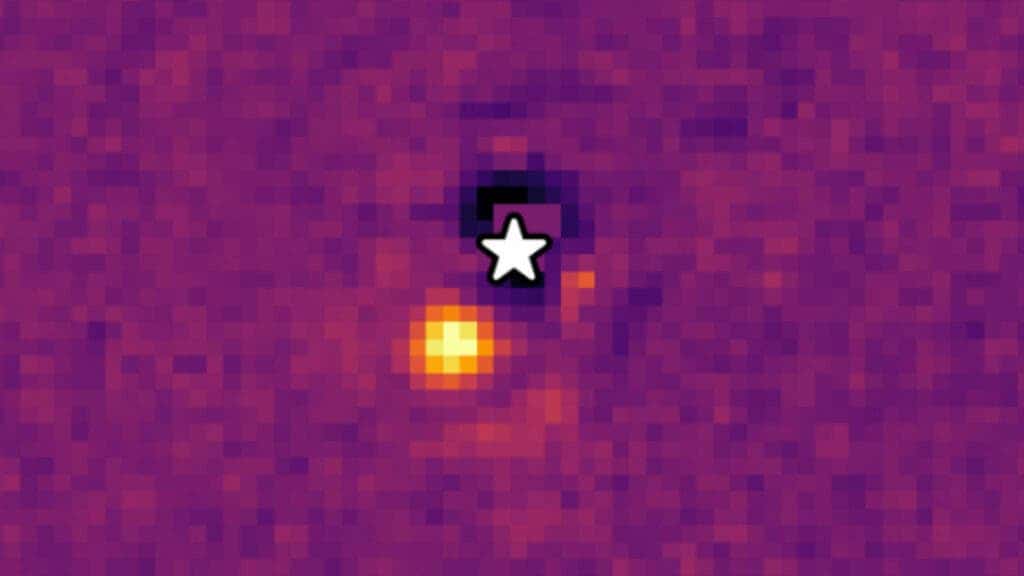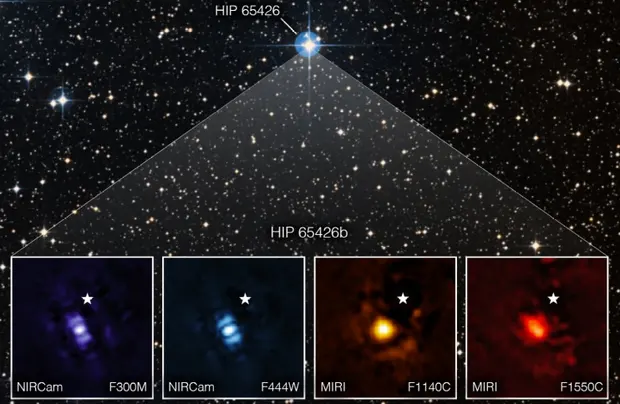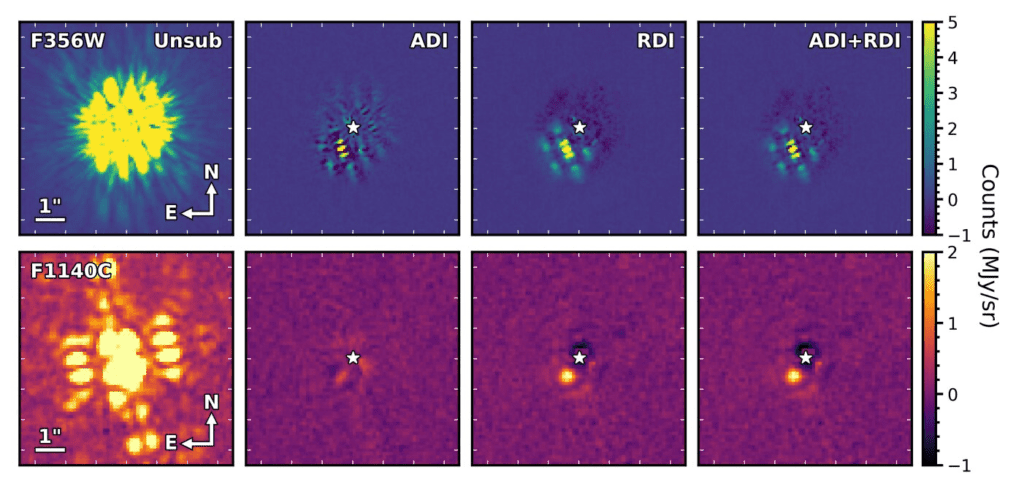
This yellow-orange blob of pixels might not look like much, but it’s actually very important and consequential. It is the direct image of an exoplanet currently orbiting its parent star more than 400 light-years away, as seen by the new but already prodigious James Webb Space Telescope (JWST).
Although it just became operational this summer, James Webb Telescope is already paying for itself, having imaged distant galaxies from the dawn of the universe in exquisite and unprecedented detail, as well as making observations of exoplanets such as this.
Astronomers have been so blown away by the current performance, they estimate James Webb is operating ten times better than expected at studying far-away exoplanets. Its most recent target, a distant world about seven times heavier than Jupiter, located in the HIP 65426 star system, was first identified by the Very Large Telescope in Chile in 2017. Now, astronomers at the University of Exeter directed JWST’s gaze towards the exoplanet, known as HIP 65426 b, to study it in greater detail.

Imaging stars is one thing — they’re big and bright — but imaging planets is another.
So far, astronomers have confirmed over 5,000 exoplanets, the first of which were just discovered in the 1990s. But since planets are billions of times dimmer than their host stars, they’re easily lost in the glare. This is why over 99% of all the alien worlds scientists have discovered so far have been found indirectly, by studying the effects they have on their parent star.
However, the JWST is so powerful it is capable of imaging some exoplanets directly, thanks to its massive 6.5-meter-wide hexagonal mirror located more than a million miles away from space, undisturbed by Earth’s atmosphere.
Astronomers first blocked light from the host star using a special mask known as a coronagraph or starshade. This revealed light reflecting off the exoplanet, which is thousands of times fainter than that of its star, like “a firefly around a searchlight,” lead author Sasha Hinkley told Quanta. The fact that HIP 65426 b orbits about 100 times farther from its star than Earth does the sun made it much easier for the JWST to see the planet against the star’s glare.
“It was really impressive how well the JWST coronagraphs worked to suppress the light of the host star,” Hinkley said.

By directly imaging and producing spectra of exoplanets, astronomers can produce much more precise measurements and even find out what these planets’ atmospheres are made of. In turn, this can inform us what physical processes occur in these worlds, which can determine whether or not they are habitable. Only two dozen or so exoplanets have been directly imaged thus far.
The new direct imaging of HIP 65426 b showed that the exoplanet’s surface is burning at a toasty 900 degrees Celsius, despite being incredibly far away from its star, completing a full orbit in 630 Earth years. The high temperature is caused by internal processes left over from its formation just 14 million years ago — this is very much still a baby planet on a geological timescale.
While very young, the planet is quite hefty. It has a mass of about seven times Jupiter’s while being 1.4 times larger. This combination of properties is not easily explained by scientists’ current planet formation models, which is precisely why such observations are valuable — they can help scientists refine their models and tighten their understanding of how worlds form, including Earth.
JWST is already working far better than expected. So much so that astronomers are now confident they can directly image much smaller exoplanets, some as small as Neptune and Uranus. Just last week, astronomers reported how they used JWST to detect carbon dioxide in the atmosphere of WASP-39 b, an exoplanet located 650 light-years away from Earth. It’s the first time that greenhouse gas has been found in an exoplanet. The ultimate goal is to peer through the atmosphere of rocky exoplanets that are similar to Earth. This is certainly pushing the limits of JWST, but what astronomers might find could be nothing short of groundbreaking.
The findings appeared in the preprint server ArXiv.


